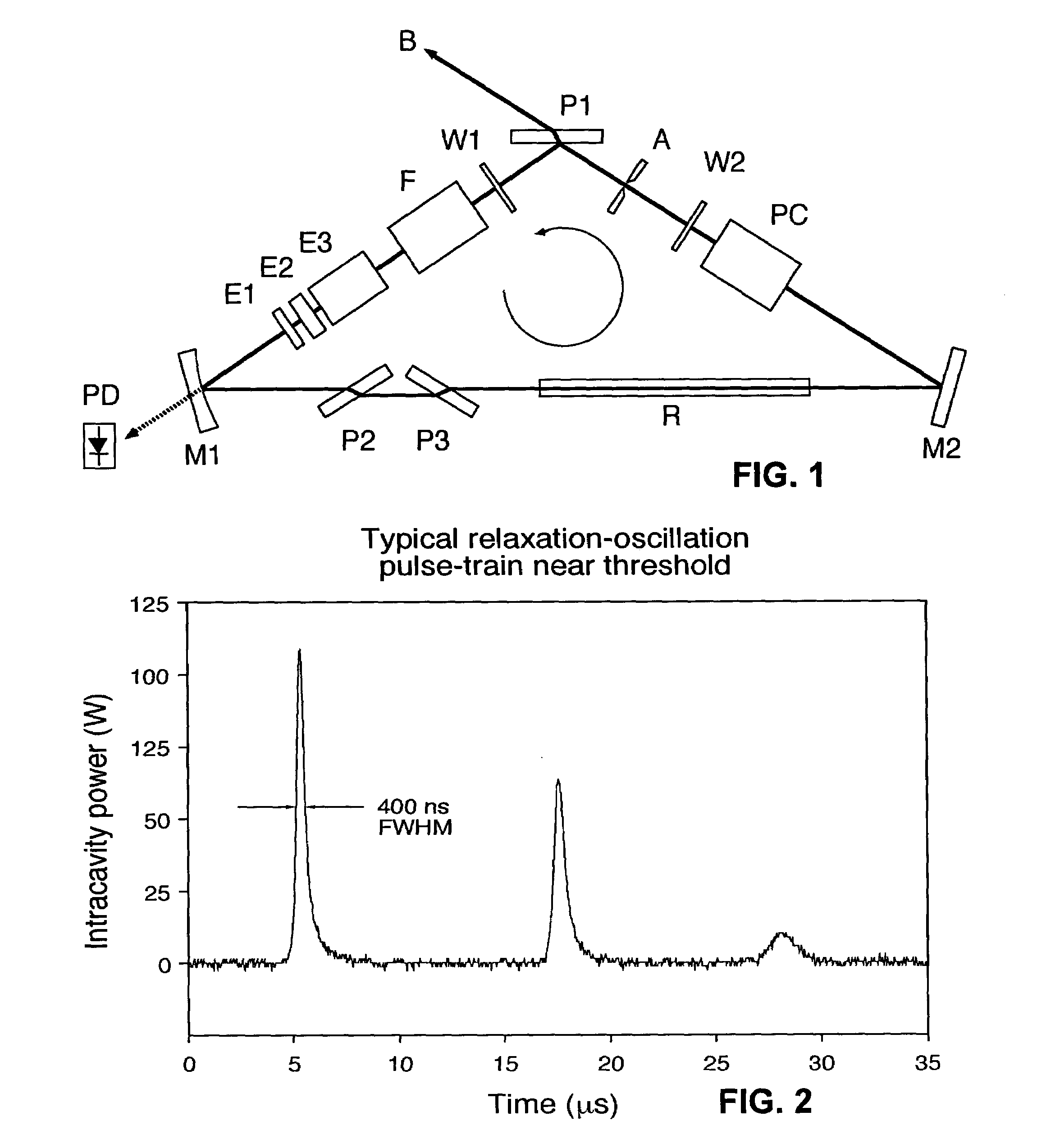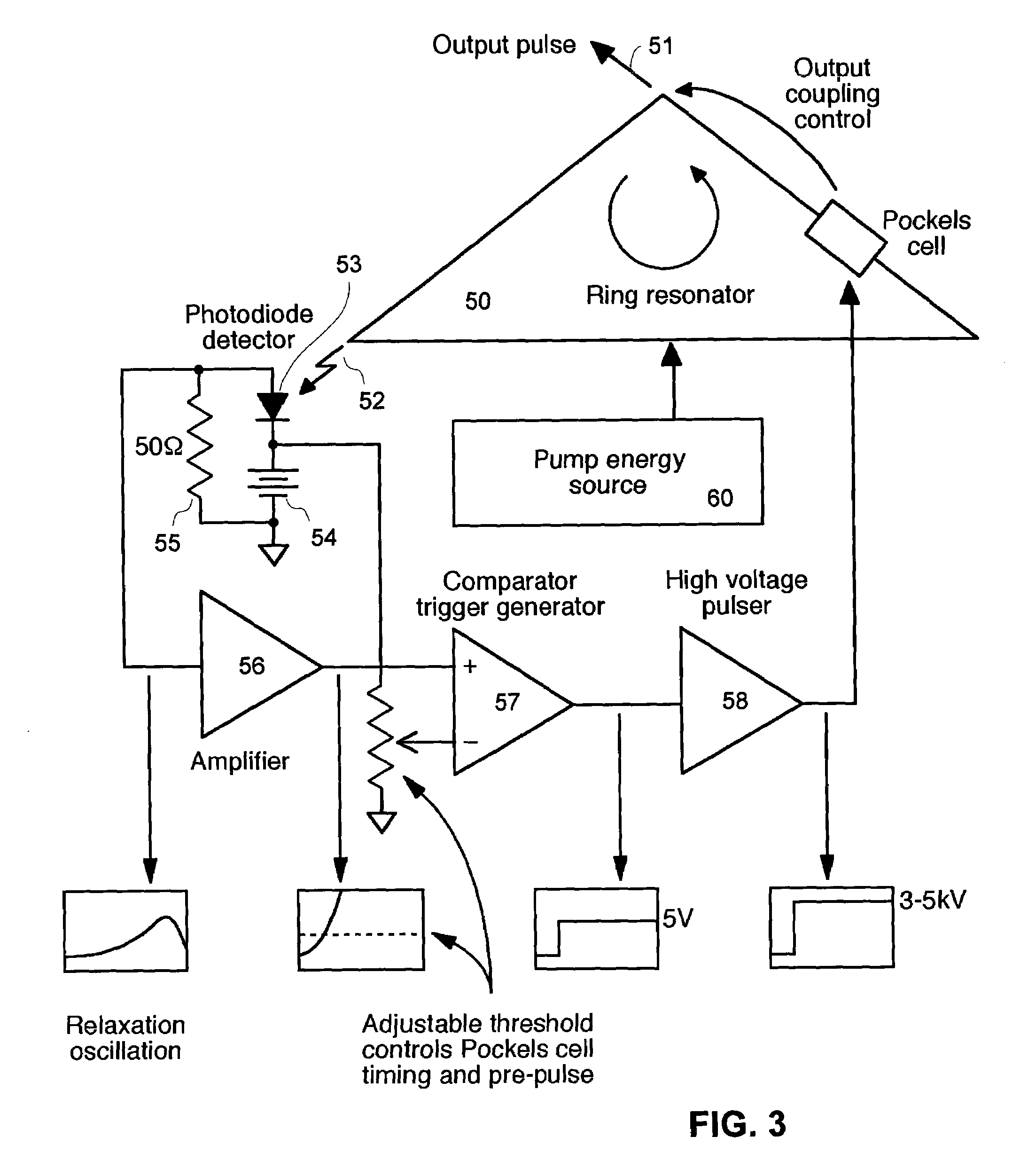Self-seeded single-frequency solid-state ring laser and system using same
a single-frequency solid-state ring laser and self-seeded technology, which is applied in the direction of substation equipment, manufacturing tools, welding/soldering/cutting articles, etc., can solve the problems of limited mopa configuration performance, inability to provide lasers with both sufficient energy and sufficient repetition rate to achieve production throughput at affordable costs, and inability to use. , to achieve the effect of reducing the number of pulses, and reducing the number of laser
- Summary
- Abstract
- Description
- Claims
- Application Information
AI Technical Summary
Benefits of technology
Problems solved by technology
Method used
Image
Examples
Embodiment Construction
[0036]A detailed description of embodiments of the present invention is provided with reference to FIGS. 1–8. A self-seeded single-frequency solid-state Q-switched ring laser with electronically adjustable output coupling is described with reference to FIGS. 1–5. FIG. 7 illustrates a master oscillator / power amplifier embodiment of the present invention including the laser system of FIGS. 1–5 as a master oscillator, capable of producing pulses as graphed in FIG. 6. FIG. 8 illustrates application of the present invention in a laser peening environment.
[0037]The basic architecture of the single-frequency Q-switched laser oscillator of an embodiment of the present invention is shown in FIG. 1. Two mirrors M1, M2 and a polarizing beam splitter P1 are arranged to form a resonator in the form of a triangular optical ring. The resonator is housed in a box (not shown) to prevented air turbulence from interfering with operation of the resonator. Going counterclockwise around the ring starting...
PUM
| Property | Measurement | Unit |
|---|---|---|
| wavelength | aaaaa | aaaaa |
| radius | aaaaa | aaaaa |
| reflectivity | aaaaa | aaaaa |
Abstract
Description
Claims
Application Information
 Login to View More
Login to View More - R&D
- Intellectual Property
- Life Sciences
- Materials
- Tech Scout
- Unparalleled Data Quality
- Higher Quality Content
- 60% Fewer Hallucinations
Browse by: Latest US Patents, China's latest patents, Technical Efficacy Thesaurus, Application Domain, Technology Topic, Popular Technical Reports.
© 2025 PatSnap. All rights reserved.Legal|Privacy policy|Modern Slavery Act Transparency Statement|Sitemap|About US| Contact US: help@patsnap.com



